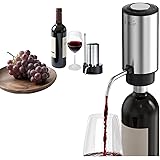Are you eager to broaden your wine horizons beyond the well-trodden paths of Bordeaux, Tuscany, or Napa Valley? While these regions are undoubtedly celebrated for their exceptional wines, a vast and diverse world of viticulture awaits discovery. The video above has taken you on an insightful tour of some of the globe’s most captivating yet **underrated wine regions**, offering a glimpse into the hidden gems of the wine world. This article will delve deeper into these remarkable areas, providing further context, history, and details that underscore their significance and the unique characteristics of their often-overlooked wines.
Exploring **underrated wine regions** allows enthusiasts to uncover new flavors, appreciate diverse winemaking traditions, and support innovative producers. These areas, despite producing wines of outstanding quality, often remain outside the mainstream spotlight, making them perfect for those seeking authentic and rewarding wine experiences. From ancient lands to burgeoning new-world territories, the commitment to quality and expression of unique terroir is a consistent thread.
Valle de Guadalupe, Mexico: North America’s Ancient Roots in Winemaking
Our journey into the world of **underrated wine regions** begins in the sun-drenched Valle de Guadalupe, Mexico’s preeminent wine-producing area. It is historically significant that Mexico was the very first place where wine production began in North America. Vines were brought to the continent with the arrival of the Conquistadors, and traditional winemaking practices were established as early as 1523 by monks who required ceremonial wine for their religious services. This deep historical lineage sets the stage for a region that has been perfecting its craft for centuries, albeit largely outside of global recognition.
The Valle de Guadalupe is responsible for an astonishing 85 to 90 percent of all Mexican wine production, solidifying its status as the nation’s most crucial viticultural hub. Most vineyards are situated at an elevation ranging from 1,000 to 1,250 feet. This elevation, coupled with the unique influence of winds blowing from both the Pacific Ocean to the west and the Gulf of California to the east, creates a distinctive Mediterranean climate. Such conditions are ideally suited for a variety of grapes, including Grenache and Syrah, which thrive in the warm temperatures. Additionally, popular international varietals like Cabernet Sauvignon, Merlot, Tempranillo, Nebbiolo, Sangiovese, Chardonnay, and Sauvignon Blanc are successfully cultivated here.
What truly sets this region apart is its vibrant winemaking community, often described as a melting pot of different wine styles and innovative ideas. There is a palpable energy for experimentation and a commitment to quality. Recently, a significant emphasis has been placed on sustainable farming practices, alongside the installation of underground irrigation systems. These advancements are instrumental in both increasing and improving wine production, ensuring the long-term health of the vineyards and the consistent quality of the wines being produced. For those looking to explore, wineries such as Lechuza, Corona del Valle, and Solar Fortún are often recommended.
Okanagan Valley, Canada: A Northern Powerhouse of Diversity
Moving north on our exploration of **underrated wine regions**, we arrive at the strikingly beautiful Okanagan Valley in British Columbia, Canada. While Canada is frequently associated with majestic mountains, dense forests, and pristine lakes, its burgeoning wine industry, particularly in Okanagan, has gained considerable traction. The growth here has been explosive: in 1984, there were only 13 wineries, a number that has since soared to approximately 180 today. This dramatic expansion underscores the region’s increasing prominence in the global wine scene.
The Okanagan Valley stretches for an impressive 155 miles, cradled by mountain ranges with peaks often exceeding 8,000 feet. These towering natural barriers protect the valley from typical wet weather, resulting in minimal rainfall—between 10 to 16 inches per year—during the crucial growing season. This creates a desert continental climate, remarkably moderated by a series of four interconnected lakes that run through the region. Positioned between the 49th and 50th parallels, the Okanagan Valley shares a similar latitude with esteemed European regions such as Champagne, France, and the Rheingau in Germany, hinting at its potential for producing world-class wines.
Summers in Okanagan are characterized by hot, long days of sunshine, with average temperatures around 85 degrees Fahrenheit, frequently reaching 100 degrees. Crucially, these hot days are followed by cool summer nights, a diurnal temperature shift that helps preserve acidity and fosters the development of fresh, bright wines – a true signature of Okanagan viticulture. The region’s varied micro-climates enable the production of an impressive array of styles: German-style Rieslings, red blends reminiscent of Bordeaux, vibrant Pinot Noirs, and a selection of sparkling wines. Of course, the Okanagan Valley is also world-renowned for its exquisite ice wine, a sweet delicacy produced from grapes frozen on the vine. Popular varietals include Merlot, Cabernet Sauvignon, Cabernet Franc, Pinot Noir, Pinot Gris, Chardonnay, and Riesling.
Sicily, Italy: Ancient Volcanic Terroir and Indigenous Grapes
Sicily, an island often first associated with its dramatic cinematic portrayals, holds a deeply rooted history as an **underrated wine region** that has been producing top-notch wines for thousands of years. Its quintessential Mediterranean climate is inherently ideal for viticulture, characterized by abundant sunshine and moderate rainfall.
A pivotal influence on Sicily’s unique terroir is Mount Etna, Europe’s most active volcano. The volcanic activity over millennia has enriched the surrounding vineyard soils with a wealth of mineral nutrients, lending a distinctive character to the wines. This geological marvel creates a dynamic environment where grapes thrive in nutrient-rich, often mineral-laden, soils. The primary red Sicilian grape variety is Nero d’Avola, known for its bold fruit and structure. However, the island also champions a host of indigenous varietals such as Nerello Mascalese, Frappato, and Nerello Cappuccio, each contributing to Sicily’s unique identity. International varietals like Cabernet Sauvignon, Merlot, and Syrah are also widely cultivated, showcasing the island’s versatility.
For white wines, Sicily boasts an equally impressive array of native grapes including Carricante, Catarratto, Grillo, Insolia, Grecanico, Bianca, Malvasia, Zibibbo, and Moscato. Sicilian wines are frequently lauded for their fresh, fruity, and elegant characteristics, often reflecting the island’s sun-drenched environment and mineral-rich soils. The Etna Rosso and Etna Bianco wines, in particular, are highly recommended for those wishing to experience the powerful influence of volcanic terroir.
Naoussa, Greece: The Revival of Xinomavro
Our journey through **underrated wine regions** takes us next to Naoussa, Greece, a region with a rich, albeit turbulent, viticultural history. In the 19th century, Naoussa’s wines enjoyed considerable popularity among European consumers, partly due to the resourceful Greeks who exported their wines across Europe, thus cleverly sidestepping high taxes imposed by the Ottoman Empire. This period of prominence, however, was later disrupted by the devastating phylloxera epidemic, which destroyed many vineyards.
A significant turning point occurred in the 1960s when many of these vineyards were replanted, coinciding with the introduction of modern winemaking techniques. This marked a crucial catalyst, reigniting quality wine production and bringing the region back to its former glory. Naoussa is situated approximately 70 miles west of Thessaloniki in Northern Greece and boasts some of the country’s most important appellations.
The vineyards are notably protected by Mount Vermio from the cold winds that descend from the Balkan Peninsula. However, the region also benefits from cool, damp winds originating from the Aegean coast, which contribute to a remarkably cool Mediterranean climate. This unique climatic condition is particularly beneficial for its star grape: Xinomavro. There are approximately 740 acres of this native red wine grape planted across nine different villages, making it the undeniable heart of Naoussa’s winemaking. Xinomavro wines are known for their high tannins, acidity, and complex aromatics, often drawing comparisons to Nebbiolo from Piedmont.
Colchagua Valley, Chile: A Haven for Red Wines
Next on our list of **underrated wine regions** is the stunning Colchagua Valley in Chile, nestled between the majestic Andes Mountains and the coastal mountain range. This valley is widely recognized for producing some of Chile’s finest red wines, yet it often remains an undiscovered gem on the world wine stage.
The viticultural landscape of Colchagua is characterized by its steep slopes, which are meticulously terraced to facilitate grape cultivation. The soils are predominantly composed of well-drained granite, providing an ideal foundation for robust vine growth. To the north, the valley is bordered by the Tinguiririca River, further influencing the local microclimate. The proximity to the Pacific Ocean brings cooling sea winds that temper the hot days, contributing to a mild Mediterranean climate. This balance of warmth and cooling ensures that grapes achieve optimal ripeness while retaining essential acidity, resulting in harmonious and expressive wines.
Cabernet Sauvignon dominates grape production, accounting for approximately 40 percent of plantings. However, Colchagua is perhaps most celebrated for Carménère, a grape that has found a new and prosperous home in Chile after largely disappearing from its native Bordeaux. Other significant varietals include Syrah, Merlot, Malbec, Petit Verdot, Cabernet Franc, and Pinot Noir. For white wines, Chardonnay and Sauvignon Blanc are the leading varietals. The quality of Colchagua wines is evident in producers like Casa Lapostolle, whose Clos Apalta notably achieved a perfect 100-point score, and Viña Montes, famous for its top Carménère-based wine, Purple Angel. These achievements firmly place Colchagua among the world’s elite, despite its “underrated” status.
Central Otago, New Zealand: Pinot Noir at the World’s Edge
Journeying to the southernmost reaches of the winemaking world, we discover Central Otago, New Zealand, a truly unique entry among **underrated wine regions**. While the first vines were planted around 1864, significant winemaking development in the region only began to truly flourish in the mid-1990s. Central Otago is characterized by an extreme continental climate, making the careful selection of vineyard sites within its six distinct sub-regions—Gibbston, Bannockburn, the Cromwell Basin, Bendigo, Wanaka, and Alexandra—absolutely essential. Temperatures across these areas can range from cool to intensely hot, creating a challenging yet rewarding environment for viticulture.
Central Otago has earned an exceptional reputation as one of the finest places globally to cultivate the notoriously erratic Pinot Noir varietal. Indeed, some of the world’s best Pinot Noir wines outside of Burgundy are produced here, a testament to the region’s ideal conditions and the skill of its winemakers. The dramatic temperature swings, combined with the unique glacial soils, allow Pinot Noir to develop complex aromatics, vibrant acidity, and elegant structures. In addition to Pinot Noir, other varietals such as Chardonnay, Riesling, Pinot Gris, Gewürztraminer, and Sauvignon Blanc also thrive in this diverse climate. Wineries such as Mount Difficulty, Roaring Meg, and Peregrine Wines are exemplary producers in this dynamic region.
Lavaux, Switzerland: Terraced Vineyards Above Lake Geneva
Returning to Europe, our exploration of **underrated wine regions** leads us to the breathtaking Lavaux, Switzerland, a designated UNESCO World Heritage site since 2007. This stunning landscape features vineyards that cling to steep slopes overlooking the serene Lake Geneva. Most of the approximately 200 wineries in Lavaux are small, family-run businesses, with some tracing their origins back to the 1300s, showcasing a remarkable continuity of tradition.
A key reason why wines from Lavaux remain largely undiscovered internationally is that an astonishing 95 percent of the wines produced in this region are consumed locally. This highlights the region’s strong local appreciation and the limited availability for export, making these wines truly a hidden treasure. The approximately 2,000 acres of vineyards are planted on Alpine slopes, a terrain formed by a glacier that collapsed about 15,000 years ago, leaving behind a unique terroir of clay and limestone. This ancient geological history contributes significantly to the distinctive mineral profile of the wines.
Furthermore, the sun’s rays reflect off Lake Geneva onto the terraced vineyards, enhancing the ripening process. The Chasselas grape is the primary white wine varietal of the region, known for producing crisp, mineral-driven wines that perfectly express their unique terroir. Pinot Noir and Gamay are cultivated for red wines, while Pinot Gris, Pinot Blanc, and Sauvignon Blanc also contribute to the region’s white wine offerings. Lavaux represents a perfect blend of natural beauty, ancient tradition, and exceptional, locally cherished wines.
Kartli, Georgia: The Cradle of Wine
The journey through **underrated wine regions** would be incomplete without a visit to Kartli, Georgia, a country often considered the true birthplace of wine. Archaeological evidence demonstrates that Georgians have produced wine for an astounding 8,000 years, with findings dating back as early as 6,000 BC. This places Georgia at the very forefront of winemaking history, far predating many regions commonly associated with viticulture.
Historically, wine was made by farmers and produced in bulk, stored in pits. Over a span of 2,000 years, these pits were gradually replaced by clay amphora vessels, known as Qvevri. These distinctive vessels are buried underneath the soil and filled with crushed grapes and juice to ferment over the winter. In the springtime, these pits are uncovered, and the remains of the fermented grapes are carefully removed. This ancient, continuous tradition of Qvevri winemaking was further confirmed in 2017 with the discovery of an 8,000-year-old clay container, documented as the oldest wine-making relic known to exist.
Kartli’s moderately subtropical humid climate, influenced by its proximity to the Black Sea, creates a very long growing season, which is ideal for the cultivation of exceptional grapes. In addition to a wide array of native red and white varieties, Georgians are particularly renowned for their sparkling wines, often crafted from the robust Saperavi grape variety. This profound history and unique winemaking tradition make Georgian wines, especially those from Kartli, an absolute must for any wine enthusiast seeking authentic and historically rich experiences.
Bekaa Valley, Lebanon: A Desert Oasis of Viticulture
Our penultimate stop in this exploration of **underrated wine regions** brings us to the Bekaa Valley, Lebanon, another area steeped in ancient winemaking history. The Lebanese have been producing wine since an incredible 7,000 BC, with the Phoenicians famously exporting their wines to powerful Mediterranean civilizations such as Egypt. This deep historical lineage testifies to a continuous tradition that predates many European regions.
The modern era of winemaking in Lebanon commenced with the arrival of French Jesuits in 1857, who introduced and planted the Cinsault grape variety primarily for ceremonial wine. While winemaking continued, the industry saw a significant resurgence and growth post-1991. At that time, there were only four wineries in the valley; today, that number has impressively grown to 30. The Bekaa Valley now accounts for a substantial 90 percent of the country’s total wine production, highlighting its dominance in Lebanese viticulture.
The vineyards are situated on a large plateau, nearly 3,300 feet above sea level, with soils predominantly composed of limestone and clay. This elevated geography, combined with the protection offered by surrounding mountains, shields the vines from harsh desert conditions to the east and strong maritime influences from the west. This unique microclimate is ideal for a majority of popular varieties, including Cabernet Sauvignon, Merlot, Carignan, Cinsault, and Grenache, which stylistically often draw comparisons to Bordeaux-style reds. Outstanding white wines are also produced from Sauvignon Blanc, Chardonnay, Viognier, and the indigenous varietals of Merwah and Obaideh, making Bekaa Valley a region of remarkable versatility and quality.
Uruguay: Tannat’s Promising New Home
While we initially explored ten regions, an additional, equally compelling destination that truly exemplifies an **underrated wine region** is Uruguay. Uruguay’s wine industry is increasingly being recognized as a hidden gem in the world of viticulture, particularly celebrated for its exceptional Tannat wine. Tannat, a red wine grape that originated from the Madiran region of Southwest France, has truly found a new meaning and a remarkably promising home in Uruguay, where it has proudly become the national grape.
Geographically, Uruguay is located in the southern part of South America, beautifully nestled between Argentina and Brazil, with an extensive coastline along the Atlantic Ocean. This unique geographical setting provides a temperate climate characterized by consistent rainfall and refreshing breezes from the Atlantic, thereby creating ideal conditions for viticulture. The moderate climate is crucial for producing wines with a harmonious balance of ripeness and acidity, a characteristic particularly beneficial for Tannat, a grape historically known for its robust tannins and deep color. In Uruguay, Tannat typically yields wines that are powerful yet refined, with significant aging potential.
In recent years, Uruguay’s wine industry has steadily gained international recognition, attracting a growing number of wine enthusiasts and tourists eager to explore its vineyards and wineries. The country’s developing wine routes offer visitors a wonderful opportunity to experience the scenic beauty of Uruguay’s countryside while indulging in a variety of its distinctive wines. The dedication to quality, coupled with a growing understanding of its unique terroir, ensures that Uruguay will not remain an **underrated wine region** for much longer, poised for even greater global acknowledgment of its rich viticultural offerings.







